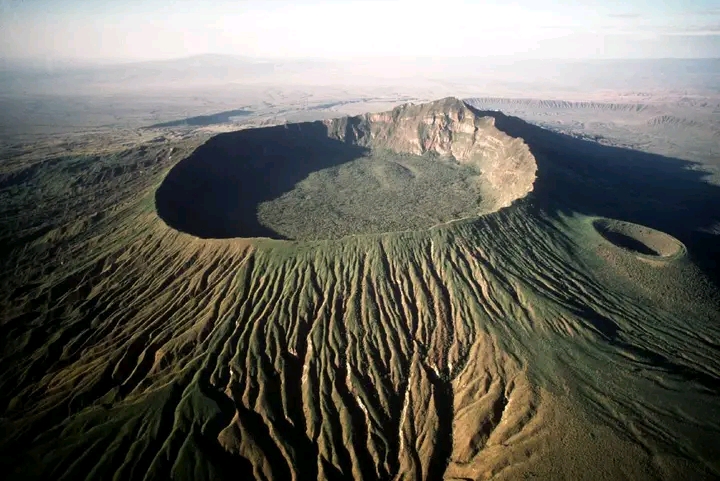The Ultimate Guide to Great Wildebeest Migration Viewing in Narok, Kenya
Experience the Great Wildebeest Migration from the frontlines in Narok, Kenya. This guide offers practical tips and vivid descriptions to prepare you for a close-up encounter with one of Africa’s most intense wildlife events, blending adventure and utility for every traveler.
Start Early to Catch Active Wildlife
Morning hours bring cooler temperatures and higher chances of witnessing river crossings or predator-prey interactions.
Bring Ample Water and Sun Protection
The open plains offer little shade; stay hydrated and wear hats, sunglasses, and sunscreen to prevent heat exhaustion.
Wear Durable Footwear with Good Traction
Expect dusty, uneven terrain that can be slippery after rains; sturdy boots improve comfort and safety.
Hire a Local Guide
Guides know recent migration paths and help you navigate safely around wildlife and sensitive areas.
The Ultimate Guide to Great Wildebeest Migration Viewing in Narok, Kenya
The dusty plains of Narok become a stage each year for one of nature’s most relentless dramas: the Great Wildebeest Migration. From July through October, over a million wildebeest, accompanied by zebras and gazelles, push across the Mara River, facing crocodile-infested waters and brutal predators. Narok offers the most accessible vantage points to witness this wildlife spectacle, where the raw force of migration meets the rhythm of the savannah.
Viewing the migration here is as much about understanding the environment as it is about spotting animals. The terrain is mostly flat with occasional rolling hills, making it a moderate trek if you venture beyond the vehicle tracks. Expect dusty trails that invite the wind – which might carry the scent of fresh earth or the distant roar of a lion – to challenge your focus. Creeks snake through the landscape, daring you to respect their shifting currents during the short rainy season.
Practical planning is essential. Early mornings bring crisp air and active animals, while midday heat demands hydration and sun protection. Walking shoes with solid tread are a must for gripping loose soils and navigating uneven ground. Local guides provide valuable insights into recent migration paths, improving your chances to witness river crossings and chase scenes.
While many visitors come via 4x4 vehicles, committing to some on-foot exploration enriches the experience. It transforms the bulk movement of wildebeest into a personal encounter with nature fiercely itself. You witness not just a spectacle but a cycle—the fight for survival written plain in hoof prints and paw marks.
At Narok, the migration is not a passive show but an active engagement. Rivers dare crossings, predators press the chase, and the land pulses with urgency. Respect the animals’ timelines; avoid chasing or crowding wildlife. Permission from local authorities and guides ensures both your safety and the preservation of this fragile ecosystem.
This guide prepares adventurers of all levels to approach the Great Wildebeest Migration with readiness and reverence. Expect vivid scenes – dust clouds rising like smoke, wildebeest bodies forming waves of motion, the sharp cry of a fish eagle overhead. Balance your enthusiasm with practical steps: bring water, wear layers, move deliberately. Here, adventure waits in quiet watchfulness as much as in bursts of frenetic movement. The migration is an elemental force—inviting you to understand rather than conquer it.
Nearby Trips
All Adventures
Boat Charters
Water Activities
Adventures near Narok
Discover the unique and memorable adventures that make Narok special.
Frequently Asked Questions
What’s the best place in Narok to view the migration?
Lookouts near the Mara River, especially in the Maasai Mara National Reserve section accessible from Narok, provide excellent vantage points. The Talek River offers quieter spots for close-up river crossing views.
Are guided walks safe during migration season?
Yes, with experienced local guides who understand wildlife behavior and terrain. Walks stick to safe zones and follow strict protocols to avoid disturbing animals or putting visitors at risk.
What wildlife besides wildebeest can I expect to see?
Expect zebras, gazelles, lions, crocodiles, hyenas, and numerous bird species like marabou storks and fish eagles, all participants in this living ecosystem.
Is it necessary to use a 4x4 vehicle, or can I hike the area?
While 4x4s cover more ground quickly and reach far-off river crossings, hiking sections near Narok enrich the experience with intimate landscape views and ground-level encounters.
What local cultural experiences are available around Narok?
Visitors can explore Maasai villages to learn about traditional lifestyles and crafts, offering a deeper connection to the land where the migration unfolds.
How does the environment handle the impact of so many visitors?
Strict park regulations, regulated safari tours, and community conservation initiatives in Narok seek to maintain the ecological balance and minimize human footprint.
Recommended Gear
Lightweight Hiking Boots
Offers support and traction on dusty, uneven trails common around migration paths.
Wide-Brimmed Hat
Protects face and neck from strong equatorial sun during long hours outdoors.
Reusable Water Bottle
Hydration is critical in the heat and dry air of the savannah plains.
Binoculars
Useful to scan distant herds and river crossings for wildlife activity without disturbing animal movement.
Local Insights
Hidden Gems
- "Oloololo Escarpment for panoramic sunset views over the migration paths"
- "Loita Hills for quieter walking trails used by local Maasai communities"
Wildlife
- "Nile crocodiles lurking in river ambushes"
- "Rare sightings of African wild dogs during intense predator-prey encounters"
History
"Narok County is home to the Maasai people, whose pastoralist traditions intersect deeply with the migration's routes, influencing conservation practices and tourism."

